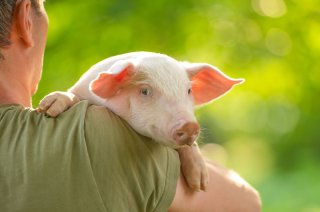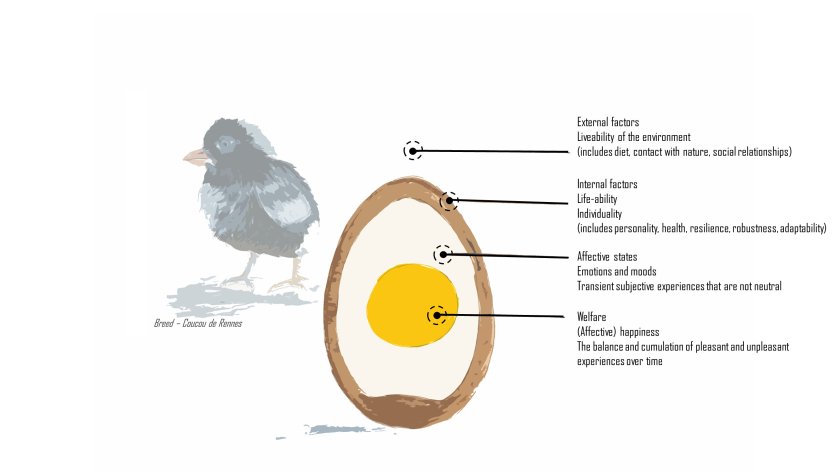
category_news
Hardly any difference between animal and human welfare
There is little difference between animal and human welfare, especially when it comes to mammals, who have much in common with humans. That is one of the conclusions of a study researchers Inonge Reimert and Laura Webb published in the scientific journal Animal. Since there is no accepted definition of animal welfare, they drew from human research, specifically that related to human satisfaction with life, also called human happiness. Webb and Reimert decided to bring all current thoughts together into an egg-like framework.
Looking to the future, the science of animal welfare has now shifted from a mere focus on minimising negative experiences in animals, such as pain, suffering and distress, towards promoting positive experiences, such as joy, contentment and relaxation. ‘We aim to bring cohesion to the field of animal welfare’, says Webb, ‘to bridge the fields of animal welfare and human happiness. And ultimately contribute to improving the lives of farm animals’.
‘The Welfare egg’
Despite being cattle and pig experts, Reimert and Webb decided to harmonise the concept of animal welfare inside a framework that looks like a chicken egg. They affectionately nicknamed their framework ‘the welfare egg’.

Animal health was long thought of as one of the most important elements of animal welfare. Yet, in the welfare egg, health is included as a factor – something external to animal welfare that may or may not influence welfare. ‘The idea is that only health aspects that influence the animal’s emotions and moods, for example health issues that are painful or disabling in some manner, would affect welfare’, says Reimert. ‘As Mason and Mendl already stated in 1993: “An animal with a tumour it cannot feel does not have a welfare problem, even if it does have a health problem”.
Emotions and moods
And while emotions and moods, or so called ‘affective states’, have often been thought of as synonymous with animal welfare, they are in the welfare egg (and elsewhere) more like ‘ingredients’ that feed into the overall welfare state. This welfare state is described as the balance between the frequency and cumulation of positive experiences and negative experiences, over a given period of time. In other words, if an animal has frequent positive experiences, and not too many negative experiences, this animal can be thought of as having good welfare. The same applies to people: the happiest people have frequent mild positive emotions.
